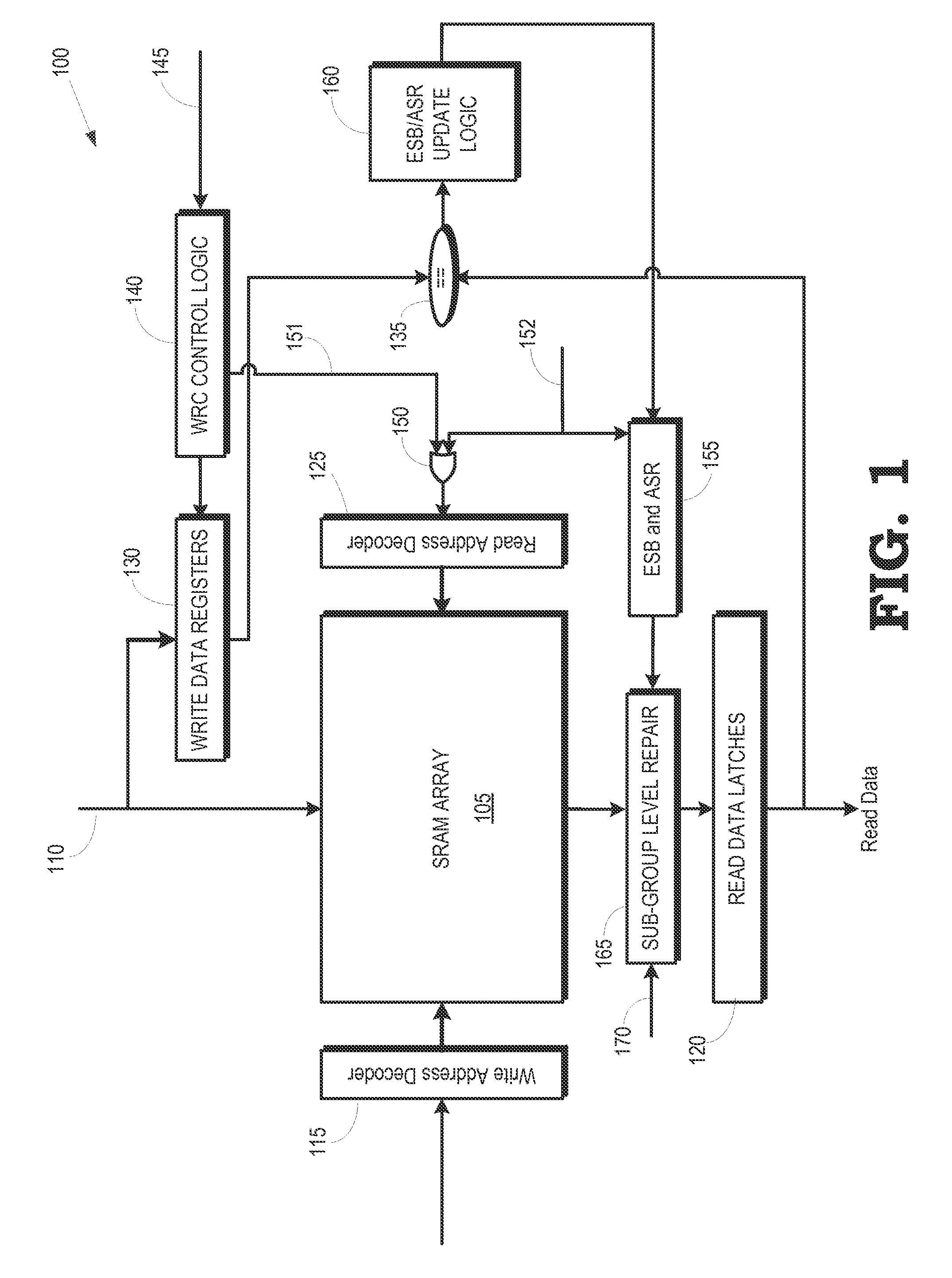Detecting and correcting hard errors in a memory array
a memory array and hard error technology, applied in the field of integrated circuits, can solve problems such as hard errors persisting, soft errors or hard errors, errors occuring,
- Summary
- Abstract
- Description
- Claims
- Application Information
AI Technical Summary
Benefits of technology
Problems solved by technology
Method used
Image
Examples
Embodiment Construction
[0022]FIGS. 1-9 describe embodiments of a processing device that can implement run time detection and classification of hard errors in portions of a memory, such as an SRAM array. The hard errors may then be corrected by replacing the faulty portions with reusable entries in an error status buffer. In the event that the hard errors are deactivated or otherwise resolved (e.g., by an increase in the operating voltage of the memory), the reusable entry can be deallocated and subsequently used to correct other hard errors in other portions of the memory. Reusing entries to correct hard errors detected at runtime, which may later resolve, can increase the number of hard errors that may be corrected over the lifetime of the processing device, potentially increasing production yield as well as the operational lifetime of processing devices such as a system-on-a chip (SOC).
[0023]Some embodiments of the processing device initially detect errors using conventional error detection techniques s...
PUM
 Login to View More
Login to View More Abstract
Description
Claims
Application Information
 Login to View More
Login to View More - R&D
- Intellectual Property
- Life Sciences
- Materials
- Tech Scout
- Unparalleled Data Quality
- Higher Quality Content
- 60% Fewer Hallucinations
Browse by: Latest US Patents, China's latest patents, Technical Efficacy Thesaurus, Application Domain, Technology Topic, Popular Technical Reports.
© 2025 PatSnap. All rights reserved.Legal|Privacy policy|Modern Slavery Act Transparency Statement|Sitemap|About US| Contact US: help@patsnap.com



